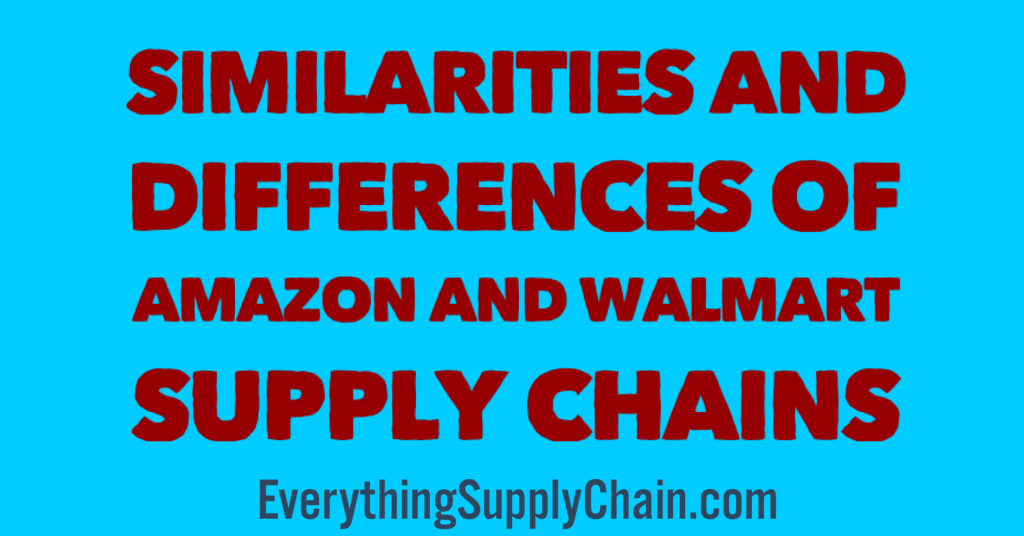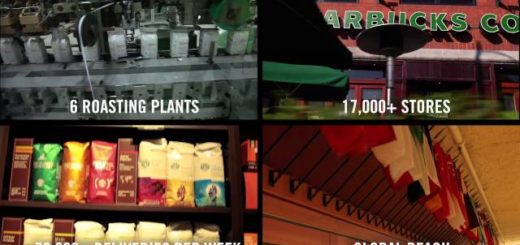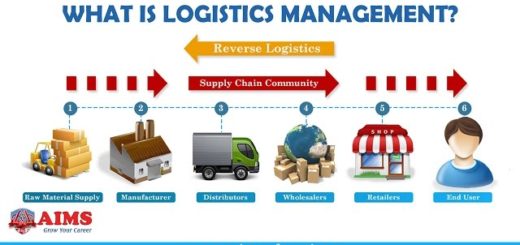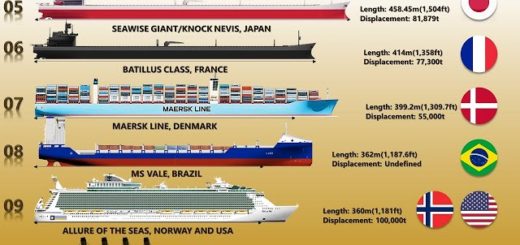Similarities and Differences of Amazon and Walmart Supply Chains.
Comparing the Supply Chains of Amazon and Walmart: Same Goals, Different Paths.
The supply chain is a critical component of any successful business, and two of the most successful companies in the world, Amazon and Walmart, have developed highly efficient supply chains that have helped them become the giants they are today. While both companies have similar goals of providing customers with the best products at the lowest prices, their supply chains differ in many ways. This article will explore the similarities and differences between the Amazon and Walmart supply chains, including their approaches to inventory management, logistics, and customer service.
Comparing the Different Strategies for Sourcing and Procurement of Amazon and Walmart
When it comes to sourcing and procurement, Amazon and Walmart have different strategies. Amazon has a more global approach, while Walmart focuses on local sourcing.
Amazon’s sourcing strategy is based on a global network of suppliers. The company has a large network of suppliers from around the world, allowing them to source products from the most cost-effective locations. This allows Amazon to offer competitive prices and a wide selection of products. Amazon also has a strong focus on technology, which allows them to automate the procurement process and reduce costs.
Walmart, on the other hand, has a more localized approach to sourcing and procurement. The company focuses on sourcing from local suppliers, which allows them to build relationships with local businesses and support the local economy. Walmart also has a strong focus on sustainability, which is reflected in their sourcing strategy. The company works with suppliers to ensure that their products are produced in an environmentally friendly manner.
Overall, Amazon and Walmart have different strategies for sourcing and procurement. Amazon has a global approach, while Walmart focuses on local sourcing. Both companies have a strong focus on technology and sustainability, which allows them to reduce costs and ensure that their products are produced in an environmentally friendly manner.
Investigating the Different Strategies for Global Supply Chain Management of Amazon and Walmart
Global supply chain management is a critical component of the success of any large-scale retail business. Amazon and Walmart are two of the largest retailers in the world, and both have developed sophisticated strategies for managing their global supply chains. In this paper, we will explore the different strategies employed by Amazon and Walmart to manage their global supply chains.
Amazon has developed a comprehensive approach to global supply chain management. The company has invested heavily in technology and automation to streamline its operations. Amazon has implemented a number of strategies to optimize its supply chain, including the use of advanced analytics to identify and address inefficiencies, the use of predictive analytics to anticipate customer demand, and the use of artificial intelligence to automate processes. Additionally, Amazon has invested in a network of warehouses and fulfillment centers around the world to ensure that products are delivered quickly and efficiently.
Walmart has also developed a comprehensive approach to global supply chain management. The company has invested heavily in technology and automation to streamline its operations. Walmart has implemented a number of strategies to optimize its supply chain, including the use of advanced analytics to identify and address inefficiencies, the use of predictive analytics to anticipate customer demand, and the use of artificial intelligence to automate processes. Additionally, Walmart has invested in a network of warehouses and fulfillment centers around the world to ensure that products are delivered quickly and efficiently.
In addition to these strategies, both Amazon and Walmart have invested in a number of other initiatives to improve their global supply chain management. These initiatives include the use of third-party logistics providers to manage inventory and transportation, the use of advanced tracking systems to monitor shipments, and the use of digital platforms to facilitate communication between suppliers and customers.
Overall, Amazon and Walmart have developed sophisticated strategies for managing their global supply chains. Both companies have invested heavily in technology and automation to streamline their operations, and both have implemented a number of initiatives to optimize their supply chains. By leveraging these strategies, Amazon and Walmart have been able to remain competitive in the global retail market.
Analyzing the Different Strategies for Last Mile Delivery of Amazon and Walmart
The last mile delivery of goods is a critical component of the e-commerce industry. Companies such as Amazon and Walmart have developed different strategies to ensure efficient and cost-effective last mile delivery. This article will analyze the different strategies employed by Amazon and Walmart for last mile delivery.
Amazon has developed a comprehensive delivery network that includes a variety of delivery options. Amazon has invested heavily in its own delivery infrastructure, including Amazon Flex, Amazon Logistics, and Amazon Prime Air. Amazon Flex is a crowdsourced delivery service that allows independent contractors to deliver packages for Amazon. Amazon Logistics is a delivery service that uses Amazon-owned trucks and vans to deliver packages. Amazon Prime Air is a drone delivery service that is currently in development.
Walmart has also developed a comprehensive delivery network. Walmart has partnered with third-party delivery services such as Deliv, Postmates, and DoorDash to provide last mile delivery. Walmart also offers its own delivery service, Walmart Delivery, which uses Walmart-owned trucks and vans to deliver packages. Walmart also offers in-store pickup and curbside pickup services for customers who prefer to pick up their orders in person.
Both Amazon and Walmart have invested heavily in their delivery networks to ensure efficient and cost-effective last mile delivery. Amazon has invested in its own delivery infrastructure, while Walmart has partnered with third-party delivery services. Both companies offer a variety of delivery options, including same-day delivery, in-store pickup, and curbside pickup.
In conclusion, Amazon and Walmart have developed different strategies for last mile delivery. Amazon has invested in its own delivery infrastructure, while Walmart has partnered with third-party delivery services. Both companies offer a variety of delivery options to ensure efficient and cost-effective last mile delivery.
Examining the Different Supply Chain Technologies Used by Amazon and Walmart
Supply chain management is a critical component of any successful business, and two of the world’s largest retailers, Amazon and Walmart, have invested heavily in the development of innovative supply chain technologies. In this article, we will examine the different supply chain technologies used by Amazon and Walmart.
Amazon has developed a number of proprietary technologies to optimize its supply chain. The company’s Fulfillment by Amazon (FBA) program allows third-party sellers to store their products in Amazon’s warehouses and have them shipped directly to customers. This eliminates the need for sellers to manage their own inventory and shipping, allowing them to focus on other aspects of their business. Amazon also uses advanced algorithms to predict customer demand and optimize inventory levels. This helps the company ensure that it has the right products in the right places at the right times.
Walmart has also invested heavily in supply chain technologies. The company’s Retail Link system allows suppliers to access real-time data on sales, inventory levels, and other metrics. This helps Walmart and its suppliers better manage their inventory and ensure that products are available when customers need them. Walmart also uses predictive analytics to anticipate customer demand and optimize its supply chain.
In addition to these technologies, both Amazon and Walmart have invested in automation and robotics to streamline their supply chains. Amazon has developed a fleet of autonomous robots that can move products around its warehouses, while Walmart has implemented robotic arms to pick and pack items for shipment.
Overall, Amazon and Walmart have invested heavily in the development of innovative supply chain technologies. These technologies have allowed the companies to optimize their supply chains and better meet customer demand. As the retail industry continues to evolve, it is likely that these two companies will continue to invest in new technologies to stay ahead of the competition.
Exploring the Different Approaches to Inventory Management of Amazon and Walmart
Inventory management is a critical component of any successful retail business. Amazon and Walmart are two of the largest retailers in the world, and both have developed sophisticated inventory management systems to ensure that their customers have access to the products they need. In this article, we will explore the different approaches to inventory management taken by Amazon and Walmart.
Amazon has developed a sophisticated inventory management system that is based on the principles of demand forecasting and supply chain optimization. The company uses predictive analytics to anticipate customer demand and adjust its inventory accordingly. Amazon also uses a variety of tools to monitor inventory levels and ensure that products are available when customers need them.
Walmart, on the other hand, has adopted a more traditional approach to inventory management. The company relies heavily on its network of stores to manage inventory levels. Walmart uses a combination of manual and automated processes to monitor inventory levels and ensure that products are available when customers need them.
Both Amazon and Walmart have developed sophisticated inventory management systems that enable them to meet customer demand and maximize profits. However, the two companies have taken different approaches to inventory management. Amazon has adopted a more automated approach, while Walmart has relied on its network of stores to manage inventory levels.
In conclusion, Amazon and Walmart have both developed sophisticated inventory management systems that enable them to meet customer demand and maximize profits. While the two companies have taken different approaches to inventory management, both have been successful in their own right.
Comparing the Different Logistics Strategies of Amazon and Walmart
The logistics strategies of Amazon and Walmart are two of the most successful in the world. Both companies have achieved tremendous success in the retail industry, and their respective strategies have been instrumental in their success. In this article, we will compare the different logistics strategies of Amazon and Walmart to better understand how each company has achieved its success.
Amazon has a highly efficient logistics system that is based on its extensive network of warehouses and distribution centers. This system allows Amazon to quickly and efficiently deliver products to customers. Amazon also utilizes a variety of technologies, such as robotics and artificial intelligence, to streamline its operations and reduce costs. Additionally, Amazon has invested heavily in its own delivery service, Amazon Prime, which allows customers to receive their orders within two days.
Walmart, on the other hand, has a more traditional approach to logistics. The company relies heavily on its network of stores and distribution centers to fulfill orders. Walmart also utilizes a variety of technologies, such as RFID tags and automated sorting systems, to streamline its operations and reduce costs. Additionally, Walmart has invested heavily in its own delivery service, Walmart Grocery, which allows customers to receive their orders within two days.
Overall, both Amazon and Walmart have highly efficient logistics strategies that have enabled them to achieve tremendous success in the retail industry. While Amazon has invested heavily in its own delivery service, Walmart has relied more heavily on its network of stores and distribution centers. Both companies have also utilized a variety of technologies to streamline their operations and reduce costs. Ultimately, the success of each company’s logistics strategy is a testament to their respective business models.
Conclusion
The similarities and differences between Amazon and Walmart’s supply chains are clear. Both companies have invested heavily in technology and automation to improve their supply chain efficiency and reduce costs. However, Amazon has taken a more aggressive approach to supply chain innovation, while Walmart has focused more on traditional supply chain management. Ultimately, both companies have achieved success in their respective supply chains, and their strategies have been beneficial to their customers.
Amazon and Walmart SCM Resources
- Amazon CEO Jeff Bezos Quotes.
- Amazon Fulfillment Center Tour with AWS.
- Battle of the Robot Armies – Jeff Bezos vs Elon Musk.
- Global Supply Chain Chaos: Pandemic, Labor, Demand.
- How Amazon Delivers Packages So Fast.
- How Walmart Is Automating Its Supply Chain for Delivery.
- Inside Amazon’s Smart Warehouse.
- Jeff Bezos Advice For Entrepreneurs.
- SCM Resources by Topic & Supplier.
- Supply Chain Collaboration Resources on Social Media.
- Supply Chain Crisis: 500,000 Containers Stuck At US Ports.
- Target Supply Chain Strategy to Beat Amazon and Walmart’s Fast Delivery.
- Tested Walmart, Target and Amazon’s Delivery Speeds.
- Top Retail Supply Chain Blogs: Alibaba, Amazon, IKEA, Walmart
- Walmart CEO Doug McMillon Quotes.
- Walmart using AI to streamline organization.










































